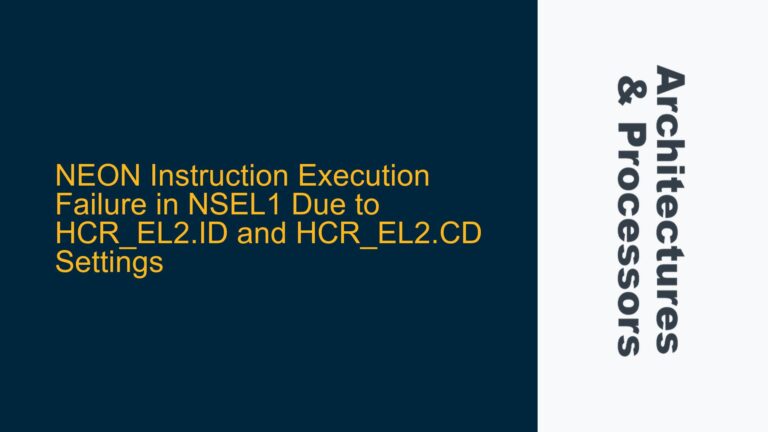Cortex-M7 Pipeline Architecture and Floating-Point Optimization
The Cortex-M7 pipeline is a sophisticated architecture designed to deliver high performance for embedded applications, particularly those requiring real-time signal processing. The pipeline consists of six stages: Fetch, Decode, Execute, Memory Access, Writeback, and Completion. For floating-point operations, the Cortex-M7 leverages its integrated Floating-Point Unit (FPU), which supports single-precision (SP) and optionally double-precision (DP) operations. The FPU operates in parallel with the integer unit, enabling dual-issue capabilities where certain instructions can be executed simultaneously.
To optimize the pipeline for floating-point operations, developers must understand the interaction between the FPU and the pipeline stages. The Fetch stage retrieves instructions from memory, while the Decode stage interprets them and prepares the operands. The Execute stage is where the FPU performs its computations, and the Memory Access stage handles data transfers. The Writeback stage updates the registers with the results, and the Completion stage ensures the pipeline is ready for the next set of instructions.
A key optimization technique involves ensuring that the FPU is fully utilized by minimizing pipeline stalls. This can be achieved by aligning data structures to avoid cache misses, using prefetching techniques to load data into the cache before it is needed, and reordering instructions to maximize dual-issue opportunities. Additionally, developers should be aware of the latency and throughput characteristics of FPU instructions, as these can significantly impact performance.
FPU Instruction Timing and Dual-Issue Constraints
The Cortex-M7 FPU supports a wide range of instructions, each with specific timing characteristics. For example, the Vector Floating-Point Multiply-Accumulate (VFMA) instruction typically takes one cycle to execute, but this can vary depending on the operands and the state of the pipeline. Similarly, the Vector Load (VLDR) instruction has a latency that depends on the memory subsystem and the alignment of the data being loaded.
Understanding the timing of these instructions is crucial for optimizing performance. The following table provides a summary of the cycle counts for common FPU instructions:
| Instruction | Description | Cycle Count |
|---|---|---|
| VFMA | Vector Floating-Point Multiply-Accumulate | 1 |
| VLDR | Vector Load | 2-4 |
| VADD | Vector Floating-Point Add | 1 |
| VMUL | Vector Floating-Point Multiply | 1 |
| VLDMA | Vector Load Multiple | 2-4 per word |
| VSTM | Vector Store Multiple | 2-4 per word |
The Cortex-M7’s dual-issue capability allows certain instructions to be executed in parallel. For example, a VFMA instruction can be issued in the same cycle as a VLDR instruction, provided that the operands are available and there are no resource conflicts. However, this is not always possible, as the FPU and the memory subsystem may compete for the same resources. In such cases, the pipeline may stall, reducing overall performance.
To maximize dual-issue opportunities, developers should carefully schedule instructions to avoid resource conflicts. This can be done by interleaving integer and floating-point operations, using load/store multiple instructions to reduce the number of memory accesses, and ensuring that data dependencies are minimized.
Data Transfer Between Integer and Floating-Point Registers
One of the challenges in optimizing the Cortex-M7 pipeline is managing data transfer between integer and floating-point registers. The Cortex-M7 provides several instructions for moving data between these register sets, including VMOV and VCVT (Vector Convert). The latency of these instructions can vary depending on the size and type of the data being transferred.
For example, transferring a single-precision floating-point value from an integer register to a floating-point register using VMOV typically takes one cycle. However, if the data needs to be converted from integer to floating-point format, the VCVT instruction may be required, which can take additional cycles. Similarly, transferring data from floating-point to integer registers may involve additional overhead if conversion is needed.
To minimize the impact of data transfer on performance, developers should aim to keep data in the appropriate register set for as long as possible. This can be achieved by structuring algorithms to minimize the need for data movement, using vectorized operations to process multiple data elements in parallel, and avoiding unnecessary conversions between data types.
In conclusion, optimizing the Cortex-M7 pipeline for floating-point operations requires a deep understanding of the pipeline architecture, the timing characteristics of FPU instructions, and the constraints of dual-issue execution. By carefully scheduling instructions, minimizing data transfer overhead, and maximizing dual-issue opportunities, developers can achieve significant performance improvements in real-time signal processing applications.






